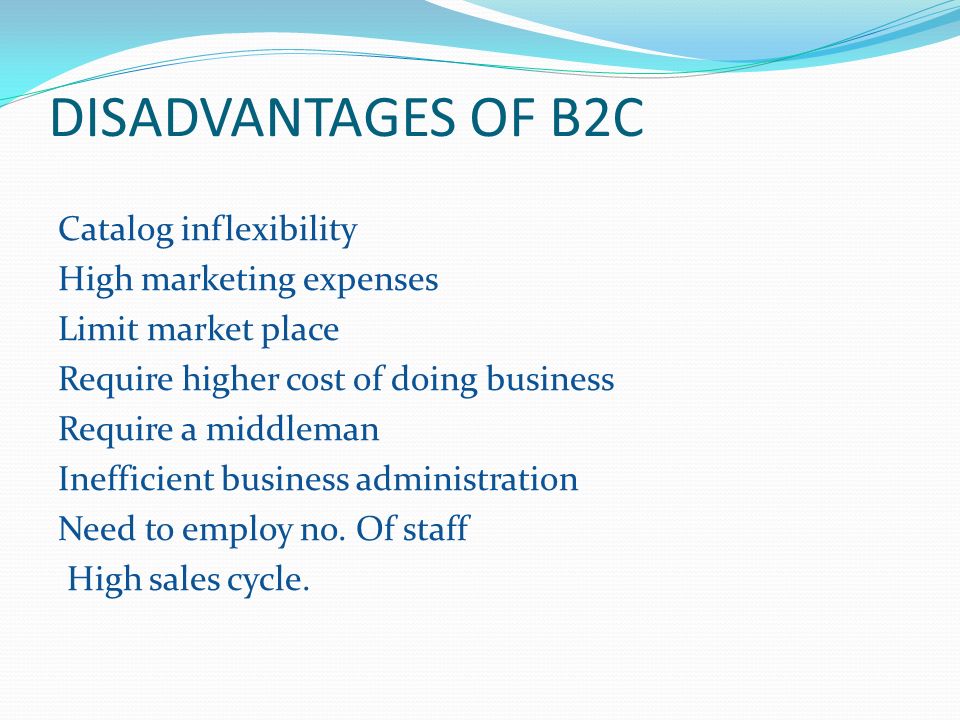B2c companies offer consumers a wide range of products and services. Some are direct sellers, while others act as online intermediaries that connect buyers and sellers. Some also generate revenue from content traffic or advertising sales.
B2c businesses take the needs and wants of their consumers into account when designing products and marketing campaigns. They can also build strong brand identities and cultivate customer loyalty.
Cost-effectiveness
Business-to-consumer (B2C) companies sell directly to customers, offering products or services that make sense for consumers on a one-on-one basis. This business model is based on online sales and marketing strategies, often with a strong focus on ecommerce. Today, many B2C companies are able to offer their products and services at lower prices than their competitors because they do not have to pay 3rd party fees.
The direct-to-consumer model is an efficient way to market products and services because a business can cut out the middleman and increase its profits. This also helps a company reduce its operating and overhead costs. In addition, it can improve customer service and create a positive customer experience.
Most modern B2c models are based on e-commerce, and the majority of them operate without a physical storefront. This saves money and time, while allowing businesses to reach a global audience with a single message. B2c businesses can use this vast and varied market to their advantage, promoting their brand and offering competitive prices to potential consumers.
Online B2C models are usually categorized into five different types: direct sellers, online intermediaries, advertising-based B2C, community-based, and fee-based. The most popular are ecommerce websites that sell their own products or connect buyers to sellers, such as Amazon and eBay. Others, like Netflix or The New York Times Co, earn revenue by selling ad space on their sites or restricting content to paid subscribers.
Better customer experience
While the products and services sold in B2c transactions may be the same, the customer experience varies significantly. B2c businesses need to understand their customers’ purchase journey and what they want from the experience. They must also offer an easy way for consumers to reach out to them if they have a question or problem with their purchase.
In addition, companies that operate in the B2c space tend to have lower customer acquisition costs since their purchases are typically less expensive and more casual or impulsive than those of B2b customers. This makes them easier to target with marketing strategies that can produce desired results quickly and efficiently.
Many B2c companies sell their own products, but they can also partner with other vendors to fulfill customer requirements. For example, a lumberyard would be considered B2c if it sold building materials directly to individual consumers. The same is true of companies that sell content through online subscription services such as Netflix or Hulu.
As a result, B2c customer service teams need to develop intuitive knowledge bases and create chatbots that can address common issues. However, it’s important to have a strong escalation process in place so that customers with more complex or technical issues can be connected to a live representative. This is especially important because a poor customer experience can result in them switching to a competitor.
Greater control
Business-to-consumer (B2C) companies sell products or services directly to consumers. They can offer a wide range of products and services, from consumer electronics to fashion, food, and transportation. B2C businesses can use a variety of marketing strategies to reach a large and diverse audience. In addition, they can often lower customer acquisition costs by offering lower prices and short sales cycles.
The main advantage of the B2C model is that it offers a high level of customization and personalization. Many consumers prefer a personalized experience and will be more likely to support a brand that caters to their unique needs. This can lead to strong brand loyalty and long-term growth.
Another benefit of the B2C model is its ability to reduce overhead costs. By avoiding third parties and focusing on the customer experience, B2C companies can save money on data entry, staffing, and phone calls. Additionally, they can track customer behavior and collect information about their target market.
Moreover, B2C businesses can offer lower prices than their competitors because they do not need to pay for distribution or logistics services. In addition, they can make sales 24/7 through online ecommerce platforms. B2C ecommerce is an excellent way to reach a wider audience and increase your business revenue. It can also help you improve your product development and increase the efficiency of your operations.
Less risk
B2C transactions involve less risk because consumers are the final decision-makers and can choose whether to purchase or not. This model also allows businesses to market their products directly to the consumer without a middleman or sales rep. This helps reduce operational and other costs and makes it easier to manage customer relationships.
The B2C model also gives companies the opportunity to tap into a larger and more diverse market, boosting sales potential. It’s important for businesses that rely on this model to maintain good relationships with customers, which will help them gain valuable feedback and improve their product offerings. For example, Amazon and Netflix have built strong brands by offering a wide range of products and services to meet the needs of their customers.
Unlike business-to-business (B2B) transactions, which require a longer sales cycle, B2C transactions are typically faster. This can make them more attractive for businesses with shorter product life cycles. However, it’s critical for businesses to implement effective inventory management techniques in order to maximize profits.
The B2C model involves direct selling to consumers through online retailers, marketplaces, and service providers. It can also include community-based models such as Meta or Facebook that host like-minded people’s ideas, opinions, and interests. In addition, there are fee-based B2C services such as Netflix or Spotify that offer content for a premium subscription.


B2C Advantages and Disadvantages PowerPoint Template
Business-to-consumer (B2C) ecommerce involves the sale of products or services directly to consumers. Use this PowerPoint template to describe the major challenges and pros and cons of B2C ecommerce. To succeed in this type of business, you must understand your customers’ niche and offer products that are inspiring, useful or compelling. This will require substantial […]